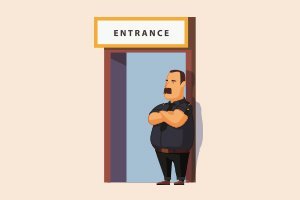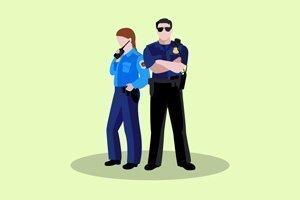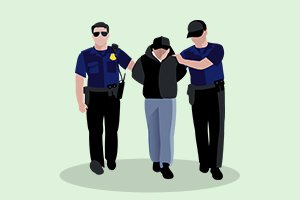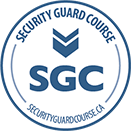Use of Force and Handcuffing
Security guards and private investigators in Ontario are governed by the Private Security and Investigative Services Act. This act is especially relevant when discussing the issues of using force or handcuffing in the field of duty. However we must keep in mind that there are still no mandatory training rules in Ontario and most Use of Force authorities come form case law and the Criminal Code. In this blog post, we will discuss the responsibilities of security guards when it comes to use of force, when it may be warranted in their work, and what to know for your security guard training in Ontario.
Avoiding conflict as a security guard
Before exploring how the law in Ontario governs the use of force by security guards on the job, the first principle to establish in security guard training is that safety is always the number one priority. If you are pursuing a security guard course in Ontario, Brampton, Mississauga, Toronto, Ottawa or basically anywhere in Canada, you will learn the same principle: the safety of the public, yourself as a security guard, and the rest of your security team is the top priority. As such, one of the main principles that you will learn in security guard training is de-escalation.
When presented with a potentially violent or crisis situation, security guards should not aim to immediately use force or verbal communication that will lead to further violence, confrontation or escalation. A security guard’s job is always to put safety and calm first. Avoidance of violent conflict and the pursuit of de-escalation are two principles that should always be in the forefront of a security guard’s mind and will serve them well in the line of duty and during their studies towards a security guard license in Ontario.
In your online training courses for security guard training and private investigator training, you will learn that controlling the actions of violent or aggressive individuals that are encountered in the field requires a specific thought process. This thought process is centered around a defensive mindset where the emphasis will be on the best routes for control, safety and the use of methods requiring minimal or no force.
It is important to remember that as a security guard, many situations provide you with a choice on how to act. Your security guard training will assist you in informing your decisions on duty and will impress upon you the need to always aim to de-escalate and to put safety first.
Use of force by security guards in Ontario
If you are presented with a scenario of violent or aggressive escalation in the line of duty, and your methods and training towards avoidance of conflict are not working, then you may be required to use force in the line of duty as a security guard. One of the main questions to ask yourself when presented with this scenario is: does this situation present an imminent or immediate danger to the safety of myself or the general public? These words are important as courts and government have stated that if they are not, security guards should simply observe and report.
If the answer is yes, then your decision making must shift towards the possibility of using force to manage the situation. According to the Ontario Private Security and Investigative Services Act, force is sometimes allowed however it must always be reasonably applied. It is this principle of reasonableness that is key. Ask yourself: Can you justify the level of force you apply to the level of threat? In addition, the government has made the use of force “reverse onus”, meaning you should ask yourself “should I be doing this at all” and, “is what I did reasonable in the totality of the situation”?
Usage of the proper Association of Public Safety Communications Officials (APCO) radio 10 codes is also essential in these situations. Calling for help, police backup, communicating that a fight or dangerous situation is occurring or requesting help over your radio is absolutely essential when confronted with an escalating situation. For a full list of available radio 10 codes to study for your security guard licensing exam in Ontario, visit the Security Guard Test Preparation Guide provided by the Ontario Ministry of the Solicitor General.
Handcuffing and Detaining
In general, security guards across Ontario are tasked with the job of maintaining safety for themselves and the general public in their assigned areas. In some situations, this may require the use of handcuffing or detainment of possibly violent persons. There are, however, strict laws governing these actions by security guards and the limits are important to understand.
Regardless of what city you are in, every security guard should study and be familiar with these limits and it all starts with proper training. For expert training to prepare you for your potential duties as a security guard, consider taking our online training course that covers the essential skills of handcuffing and use of force for security guards. In our opinion however, the days of batons are over as well as hard empty hand skills. Our theory and interactive course are now available online and are quite useful to today’s guards.
Security guard exam preparation Ontario
Use of force theory will possibly be covered as part of your licensing exam in Ontario should you wish to become a security guard. Testing your theoretical ability to maintain composure during escalating situations that may involve violence and increased stress is an essential component of security guard training. That means a solid understanding is required on how to use force, in what situations you may consider handcuffing, and what your legal rights are.
For more in-depth preparation for these scenarios, Security Guard Course (SGC) offers lessons in use of force as part of their Ontario Security License training.








